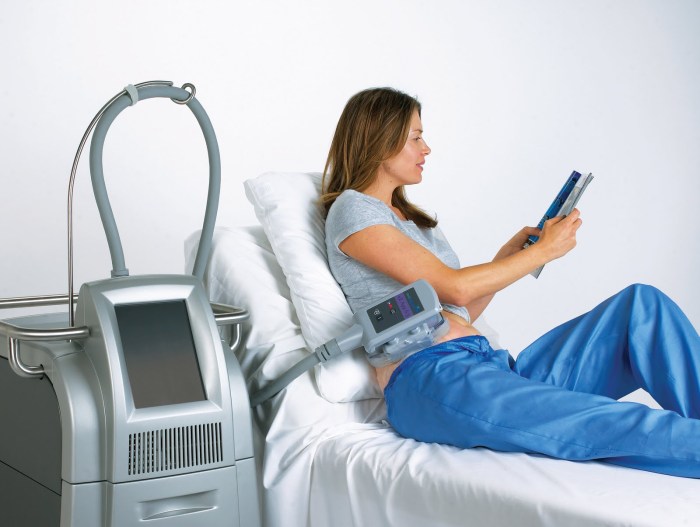DIY Coolsculpting, the practice of attempting fat reduction at home, has gained traction, fueled by the allure of cost-effective body contouring. While professional Coolsculpting treatments involve controlled freezing to target fat cells, DIY methods offer a spectrum of approaches, ranging from specialized devices to homemade solutions. This exploration delves into the world of DIY Coolsculpting, examining its techniques, products, and potential risks, ultimately empowering readers to make informed decisions about their body sculpting journey.
Table of Contents
The appeal of DIY Coolsculpting lies in its potential for affordability and convenience. However, it’s crucial to understand that while some DIY methods might offer temporary results, they often lack the scientific rigor and safety protocols of professional treatments. This article aims to provide a balanced perspective, highlighting both the potential benefits and drawbacks of DIY Coolsculpting, encouraging readers to prioritize their health and safety above all else.
DIY Coolsculpting Products

While professional Coolsculpting treatments involve specialized equipment and trained professionals, the market offers a range of DIY products that claim to deliver similar results. These products, typically creams, serums, and rollers, aim to reduce fat cells and improve skin tone through various mechanisms.
Popular DIY Coolsculpting Products
These products often utilize ingredients that are believed to mimic the effects of professional Coolsculpting treatments, but it’s crucial to understand that their effectiveness can vary significantly. Here’s a look at some popular categories and examples:
- Fat-Freezing Creams and Serums: These products typically contain ingredients like menthol, peppermint oil, and capsaicin, which create a cooling sensation and potentially promote fat cell breakdown. Examples include “Freeze Away” and “CryoSculpt.”
- Cryo-Rollers: These devices feature a roller that is chilled to a specific temperature and used to massage the skin. They are often marketed as a way to reduce puffiness, tighten skin, and promote lymphatic drainage. Examples include “Cryo-Roller” and “Ice Roller.”
- Slimming Wraps: These wraps contain ingredients like seaweed extracts, caffeine, and clay, which are believed to promote detoxification, reduce water retention, and tighten skin. They are often used in conjunction with exercise and diet for weight loss. Examples include “Body Wrap” and “Detox Wrap.”
Ingredients and Mechanisms of Action
The ingredients in DIY Coolsculpting products work in various ways to achieve their claimed effects.
- Cooling Agents: Menthol, peppermint oil, and capsaicin create a cooling sensation that can temporarily reduce inflammation and numb the skin. This can create a temporary “slimming” effect, but it’s not a permanent solution for fat reduction.
- Caffeine: Caffeine is a known stimulant that can temporarily increase blood flow and promote fat breakdown. However, its effectiveness in reducing fat cells is limited.
- Seaweed Extracts: Seaweed extracts are rich in antioxidants and minerals, which can promote skin hydration and elasticity. They may also have a temporary tightening effect on the skin.
- Clay: Clay can absorb excess oil and impurities from the skin, leaving it feeling smoother and tighter. It can also help to reduce inflammation and promote lymphatic drainage.
User Reviews and Testimonials, Diy coolsculpting
User reviews and testimonials for DIY Coolsculpting products vary widely. Some users report noticeable results, while others experience little to no difference. It’s important to consider the following:
- Individual Results: The effectiveness of these products can vary depending on individual factors such as genetics, lifestyle, and body composition.
- Product Quality: The quality of ingredients and manufacturing processes can significantly impact product effectiveness.
- Realistic Expectations: It’s important to have realistic expectations about the results of DIY Coolsculpting products. They are not a substitute for professional treatments and may not provide the same level of fat reduction.
Navigating the realm of DIY Coolsculpting requires careful consideration. While the prospect of achieving desired body contours at home can be enticing, it’s essential to prioritize safety and consult with a medical professional before embarking on any DIY fat reduction journey. Understanding the potential risks and limitations of DIY methods, alongside exploring alternative options, empowers individuals to make informed choices that align with their health goals and aspirations. Remember, a healthy and informed approach is key to achieving a positive and sustainable outcome.
DIY coolsculpting is a popular method for reducing fat, but it’s important to remember that it’s not a substitute for professional treatments. If you’re considering this, it’s essential to research and understand the risks involved. For example, some people experience discomfort or even pain during the process, which can be difficult to manage without the help of a doctor.
In some cases, people might even need to rely on strongest sleeping pills to get through the night after a DIY coolsculpting session. However, using these medications without a doctor’s supervision can be dangerous, so it’s crucial to weigh the risks and benefits carefully before pursuing any DIY methods.

